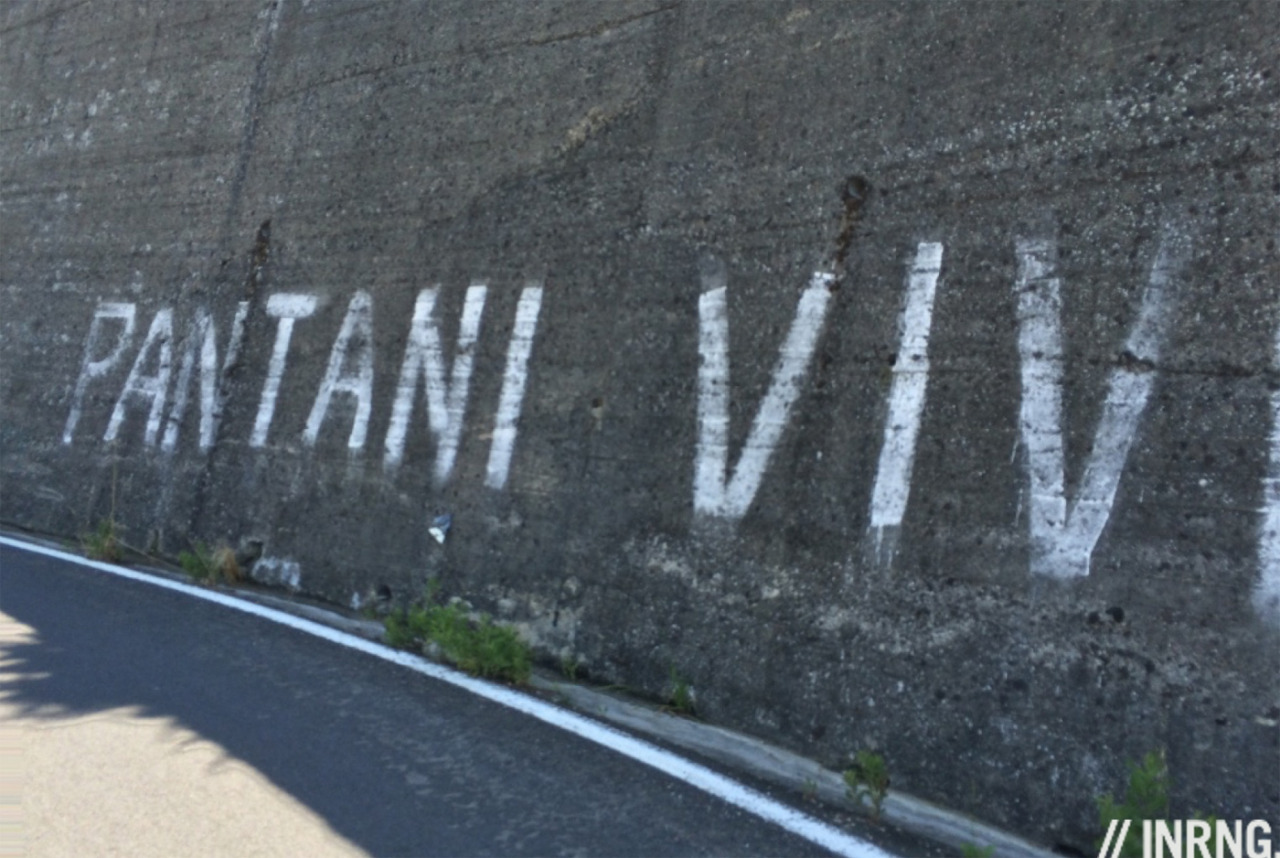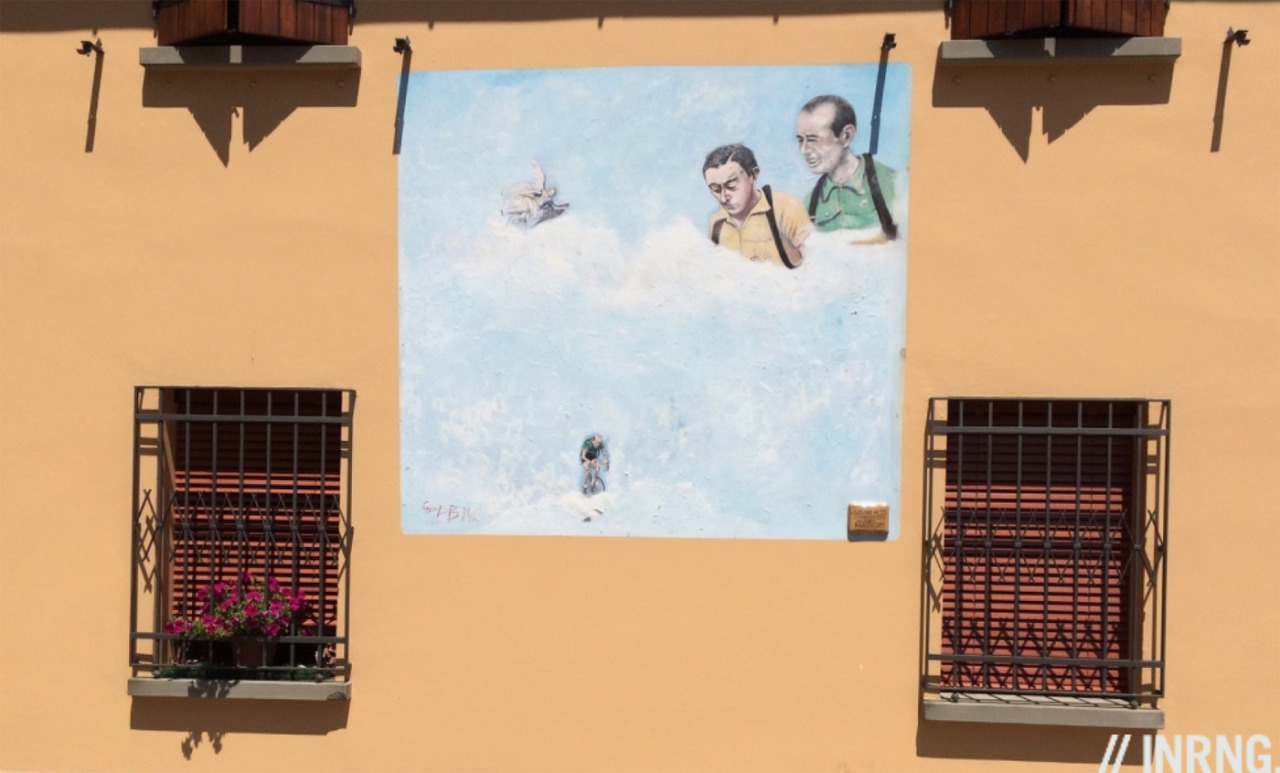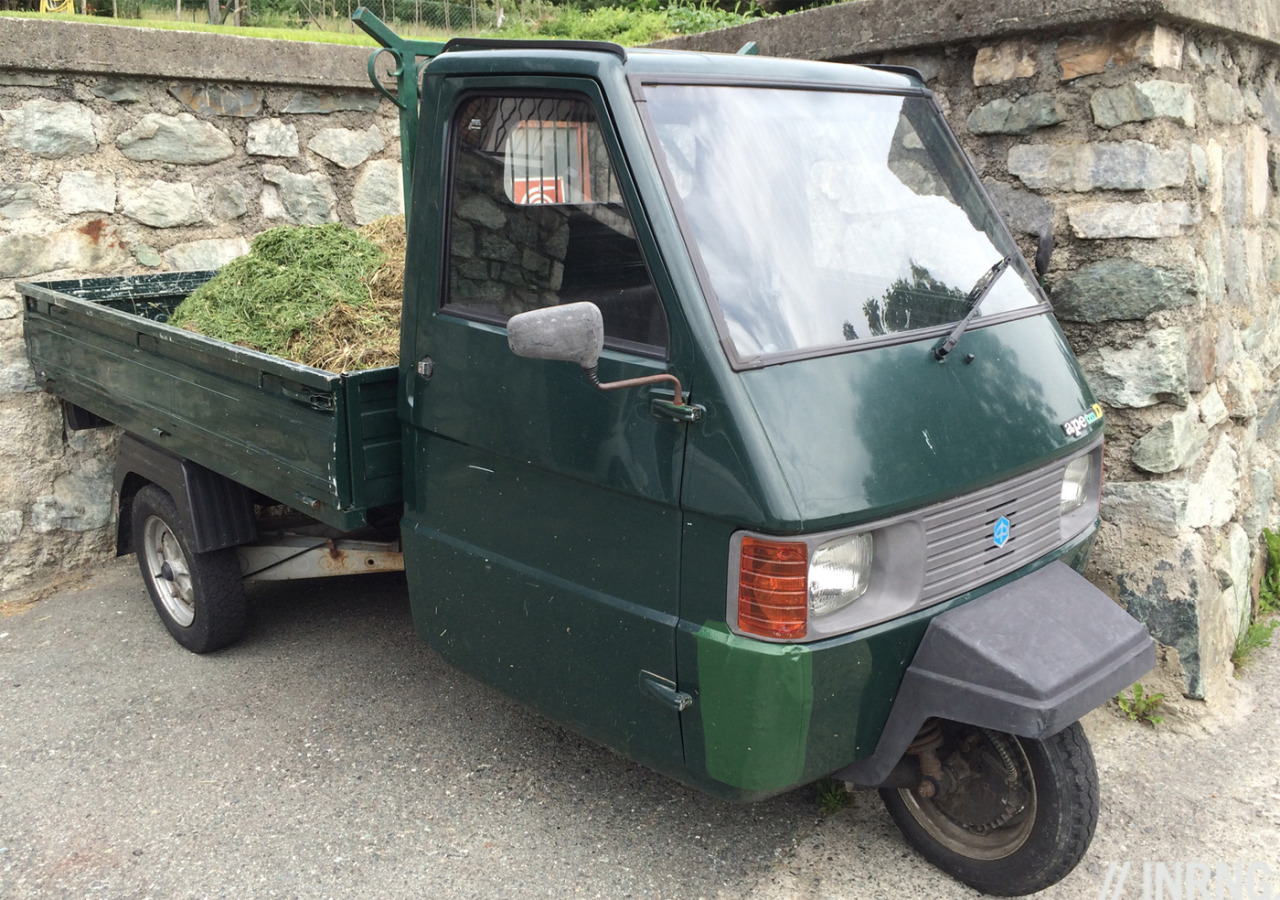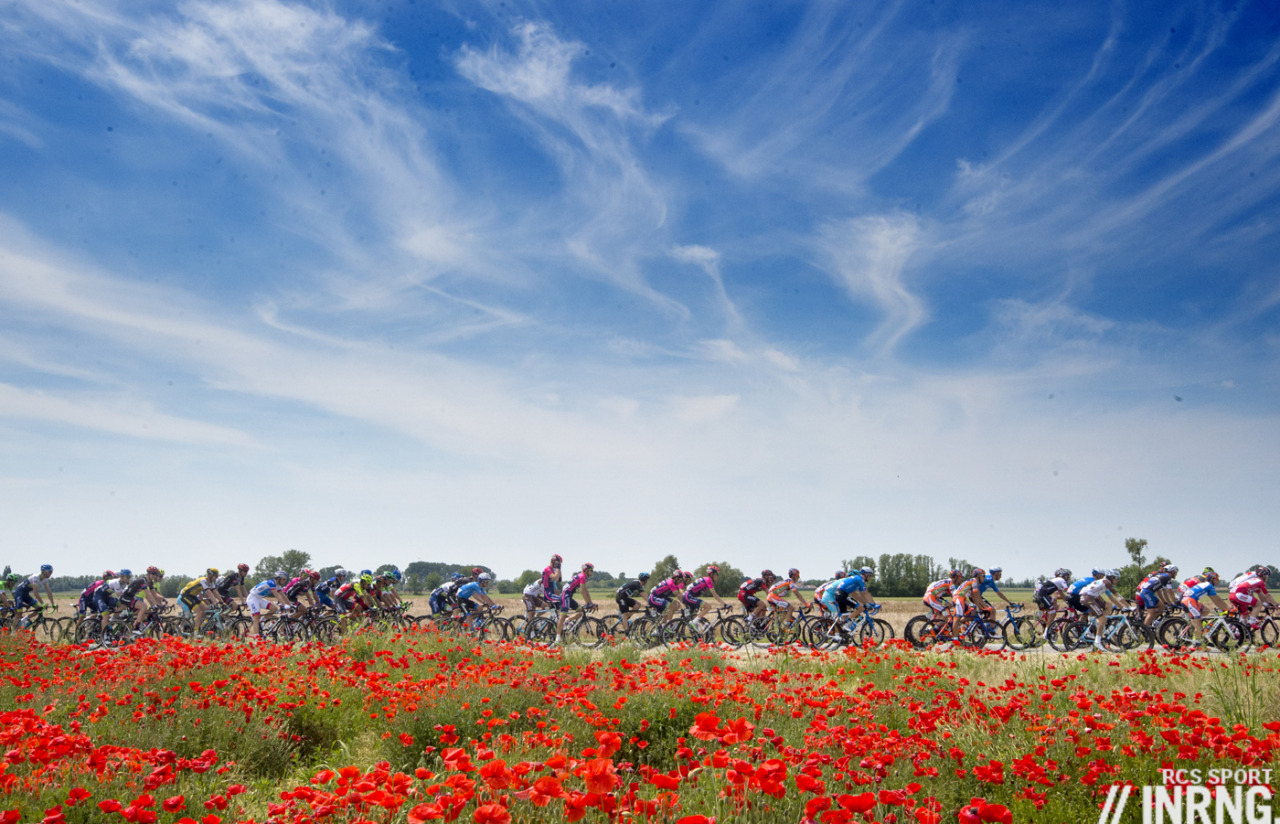With the Giro on this month one aim is to cover aspects of Italian cycling that the race cannot quite convey, whether it’s reading La Gazzetta or watching the race on Italian TV and now a quick take on what it’s like to ride in Italy.
People often baulk at driving in a foreign country but even experienced motorists can think mamma mia! when they first drive a car in Italy. The lanes on the autostrada are narrow, cars drive so close it’s like their drafting and the twisting mountain roads or the urban alleys of Rome and Naples all takes a while to get used to. But the cycling is fine, as much as people can pull wild stunts in their cars they’re often considerate to cyclists, it’s no worse than elsewhere and often better. Sure there anecdotes and data alike catalogue the accidents but in general things work fine, people are used to cyclists.
The Roads
All the tarmac roads are bordered by solid white lines on either side. Formally there are three categories of road, the Strada Statale, the Strada Regionale and the Strada Provinciale or state, regional and provincial roads, often abbreviated as SS, SR and SP and each kilometre is marked. If you’re 12km along the SS38 then you’ll see a blue sign saying SS38 12 and so on. These labels are administrative and strategic importance, for example an important link between two cities or across a mountain range is a statale, a small road between villages a regionale. The Passo Stelvio is the SS38 but often the cyclist is more likely to take the SR and SP roads as they’re normally quieter side roads. The SS roads are supposed to be centrally maintained and serviced by the state roads operator ANAS and there can be a uniform road surface applied, it rolls well and is very grippy. Most roads are well signposted, you don’t need sat nav.
Rough roads
As a rough rule the further south you go the worse the roads get. Some of this is due to poorer regions and the passing cyclist needs to be careful about complaining too loudly, sure the money isn’t there but they have other priorities than your carbon rims. But it’s a rough rule as all over Italy the roads have their moments, you’ll find difficult descents in the Dolomites and awkward ascents in Aosta. It’s not so much the small potholes you can hop over, but large sections of roads that are cracked or in a mess, a tarmac palimpsest. Most remain rideable, it just sometimes pays to hold back on a descent in case you come round a corner and beware that you may need to move out from your usual position close to the kerb so look ahead and plan.
So far a touch negative but it’s all rideable, just keep your eyes open. Unlike French roads they don’t melt in the summer sun. You can see the problems with the road as a reflection of Italy’s economic woes but it is a superficial matter. There is a huge road network to enjoy and even the small roads are often triumphs of engineering. Half the country seems to have terraced hillsides, rockfalls restrained by wire netting and there seem to be enough metal crash barriers by the road to reach the Moon and back. Just to preserve the roads is a Sisyphean task so the smooth surface can wait.

Strade Bianche
In rural parts of central Italy you can study the map, set out for a ride and discover some of the roads you’ve chose are sterrato, more commonly known to cyclists as strade bianche. They sound poetic and are worth trying because they’re normal roads used every day by locals rather than fire roads or back tracks. But the fun wears off with your drive train, it doesn’t long on a wet ride to churn up your gears and the grey paste will grind away your brake pads like they’re made of mozzarella and scour your rims. Cool in a pro race, expensive otherwise.
Group rides
If you want to hook up with others it’s not so easy. This is because cycling is just so popular people don’t need to travel in from a far to meet up from a ride, people just go out with their friends nearby. But there are some, often leaving from a town square or a municipal building like a Questura. Just be warned, that mid-week ride out of Pistoia with people in Bardiani, Vini Fantini and Etixx kit can be the real deal rather than a replica ride.
Instead just ride on a Saturday or Sunday morning and you’ll be surprised just how many cyclists are out and about. A “salve” or “ciao” is a hello.
Coffee stop
A lot of anglophone riders like to stop midway during a ride for coffee and cake but this isn’t a Euro thing. Find that group ride and a three hour ride means three hours of riding. Maybe on a very long ride you might stop for an espresso but this can be a pretext to ask the bar owner to fill up your water bottles. Still there’s nothing to stop you from having a break and sitting outside a cafe.
Cycling Clubs
Italian cycling has a big pyramid structure with elite amateur teams right down to village clubs with a few ageing members. Jerseys can be crammed with so many sponsors as to make the Androni jersey look restrained. Some are loose associations, others are serious structures. It’s not uncommon to find a pack of identikit juniors in neat formation being followed by a team car, this is how Italians learn their drills from a very early age.
Meet the locals
You may think of Italian style and a nation of cyclists on Colnagos and Pinarellos equipped with Campagnolo and spotless kit but cycling in Italy isn’t for the dentist-lawyer-banker demographic sometimes cited in English speaking countries, it’s an ordinary sport for people in rural areas. Your just as likely to Specialized, Giant or Kuota bikes with Ultegra and often ridden by silver foxes rather than any high tech jewel.

Memorials
Italy has many Pantani memorials whether long lasting graffiti like the one above, arty ones like that on the Mortirolo, giant ones on Monte Carpegna or less successful triumphant works like the odd Gollum-style one atop the Colle di Fauniera. It’s not just Pantani though, you can find memorials to Coppi and Bartali and many more.

Cronoscalata
Use Strava? Plenty of Italians do but years before you discovered the satellite tracking social media tool the Italians were timing themselves up marked segments. There are systems where you can punch a card at the start of a climb and then at the top so as to have proof of your time but increasingly these are rusting and it’s not clear they work any more. For others it’s just word of mouth and often a local climb, like Monte Serra, serves as a reference point for many. In the Alps the major climbs have markers every kilometre to inform the cyclist about the upcoming gradient and how far there is to the top, helpful but cruel if you’re on a bad day.
Bike shops
There are stores everywhere so if you visit you don’t need to bring a truckload of spares. Yes there’s Campagnolo but plenty use Shimano and SRAM so spares are equally available. Italian bike stores aren’t the conceptual experiences you might find in Melbourne, London or Tokyo, instead there are groaning shelves, a bit of dust and, best of all, often a framed maglia rosa or a rainbow jersey conquered by the owner.

Planet of The Apes
Ape? Not the simian kind but Italian word for bee. You may have heard of Piaggio, the Italian scooter manufacturer and its “Vespa” model, Italian for wasp. This is it’s worker bee cousin complete with a flatbed area at the back. It is ubiquitous in rural Italy, no training ride can avoid them. They’re easy to overtake and be warned their brakes are dire.
They’re made by Piaggio, originally – and still – an aerospace company but after World War Two the Italian army was diminished while and a wider population required cheap transport. The moped was born and with it the Vespa and huge sales which persist today, even in the face of competition from Japanese and now Chinese brands. The three wheeled Ape remains very Italian, they’re rare sights outside of the country, except India where it turns out Piaggio manufactures them.
Where?
That’s up to you, take your pick from several of Europe’s highest mountain passes. The Alps are like a crown atop the Italian peninsula going from the Mediterranean over to Slovenia and the Adriatic. The Apennines, the range of mountains that run like a spine down Italy, have some great roads too but don’t have the celebrity pull of the big Alpine climbs which only makes them more rewarding. If you want flat roads only then pick anything between Turin and Venice in the vast Po.
When?
Remember that the Giro is only just able to venture into the Alps now. Don’t think that just because spring has come to Sanremo in March that the Alps are open, many passes are closed until late May and if the ski stations are kept open they’re often covered in slush and salt. So if you want the high mountains June to October is good.
Conclusion
A huge road network, many mountains and thousands of charming villages await: what are you waiting for? Italian drivers may have a reputation but a bike ride is fine, the trick is to keep your eyes open for the sketchy road surfaces. You’re bound to spot an ape and fellow cyclists out on a ride. As well as the macro like the high Alps, charming views and a huge choice of roads what can make a ride so rewarding is the micro, a memorial by the road here, some Giro graffiti there and maybe a local bike store run by a former world champion.


Lovely article and alliterations, as per usual!
That’s lovely.
Prophetic words on the roads and gravel, but what’s it like to hire bikes generally?
I didn’t know that Piaggio were manufacturing in India now, though it doesn’t surprise me; their rival Lambretta ceased production in the early 1970’s and the entire factory was bought and re-located to India, where exact two-stroke replicas of the 1960’s / 70’s GP model are still made.
But, Inner Ring, let’s be clear about one thing here – they’re scooters NOT mopeds!
A Mod doesn’t ride a moped. Bradley Wiggins doesn’t ride a moped.
Just ‘cos you’re a Metal fan, you don’t have to stoke up old rivalries 🙂
Mopeds are back in fashion now although re-branded as e-bikes and confusingly not categorised as motor vehicles…
Metal? I’m a big fan of carbon 😉
Thanks Inrng, for sparking my idea to plan a Euro cycling holiday while the dollar is still at a good exchange. I do need to research bike hires myself.
Re: mopeds and scooters; a moped is by definition a motorized bicycle – with pedals – 50cc max and typically no gears. Basically a cheaper scooter, and more simple. I still have my mopeds – they are a blast to zip around in the city and nothing is faster from light-to-light.
I disagree regarding roads getting worse the further south you go. E.g. the Romagna has much worse roads than Campania. It fluctuates from region to region. Some southern regions receive EU funding specifically for roads.
I’ve recently written an extensive article on granfondos in Italy that include general observations on riding. Not going to link it because I don’t want to spam your comment section.
Full agree with
“A huge road network, many mountains and thousands of charming villages await: what are you waiting for? “
I suppose that’s why it’s rough rule for example for me Marche is worse than Emilia-Romagna; it depends on a lot though, a local mayor here or there.
Totally agree, driving in Italy can be scary (to a north american at least), but drivers are generally very respectful of cyclists (unlike many north americans).
Since today was a huge climb in Piemonte, let me add one other type of cycling that might be better in Italy than almost anywhere else: Along the Alps, especially the border between Piemonte and France are countless high altitude unpaved military roads (usually from late 1800s or WW1) that are perfectly rideable. For example, people know Colle delle Finestre. but that is just the entrance to many much higher passes along the Strada dell’Assietta and the Strada Militare delle Finestre (or something like that).
People should check out Will’s website and the maps of climbs it has in Italy and beyond, click on his name for it.
Nice piece, thanks for posting this. Since we’ve been operating here for almost 3 decades we’ve acquired a bit of knowledge and experience. I’m happy to provide basic advice to any Inrng’rs though of course we won’t be revealing any proprietary information.
The pavement question is interesting – used to be pros the world over marveled at the quality of Italian roads – because the locals seemed to get ’em repaved just for the Giro! Nowadays the financial crisis has put a dent in this process though you can still see it on various stages. Amazingly, the region of Lazio has the worst pavement of any place in Italy that we’ve ridden….which includes Sicily and Sardegna. One would think having Rome in your center would make things different but I can’t tell you how many times the border with Tuscany or Campania is easy to mark, simply because the pavement quality improves instantly! But that’s what 25 mm tires and reasonable pressures are for!
One note on navigation – all the roads are marked with directions to a town…it may be 5 kms away or 200. Italians will tell you to take the road to X, then the road to Y and you’ll finally find the road to where you want to go. The autostrada’s a different thing of course but I hope nobody’s riding a bike there! You’ll find the old fat guys in the big ring on a lot of the SS roads as they’re wide, fast and FLAT..but also full of cars and trucks. The little SP’s wind around, up and down with little traffic or trucks unless they’re locals or someone else interested in scenery… like you should be. I’ve ridden a bike in a lot of places, but there’s no place like ITALIA for cyclists or cycling enthusiasts.
Great article and very accurate. I have a place and a bike there but when taking friends renting bikes is easy. Locally Chrono bikes in Lucca hires out Pinarellos at €40 a day. My experience is that a LBS anywhere will have nice rental bikes. Get out there, enjoy!
Rental bikes might be easy to find in places like Tuscany, but elsewhere in Italy it’s a different story unless the place happens to be (like Tuscany) a hotbed of foreign tourism interest. Anyone coming to Italy with riding a quality road bike high on their list but not bringing their own would do well to make arrangements ahead of time rather than gamble on a local bike shop being able to take care of them.
Being a local I can fully agree about difficulties to rent a road bike.
In mountain location good mtb hires are available. In any location a road /race bike is very difficult to rent. I suggest to check with bike tours organizers or bike shops well in advance.
A few years ago, was holidaying on Island of Elba in Toscana, and there were no good bikes to rent. Bring one from the mainland. Not surprising, it’s a small island with some very steep climbs. Great beaches!
Great post!
This has been my dream for several years. A trip to Italy to cycle around the country. I live in Boulder and we are no strangers to mountains. The regions of Piedmont and Campagnia seem the most appealing to me after reading this post.
What also strikes me as fascinating is the culture of cycling expressed in art and tradition. Pantani Lives! And the Chronoscalata. What an great piece of history. Just when you think an idea (Strava) is an original…
And thanks for the tip of looking at Will’s site. It gave me even more ideas on how to plan my dream cycling trip to Italy.
Any information on the go-through way to rent a road bike in Italy when planning to ride there?
It’s not easy, it really depends on your location and even then finding the right kind of bike. Sorry I can’t offer much help here.